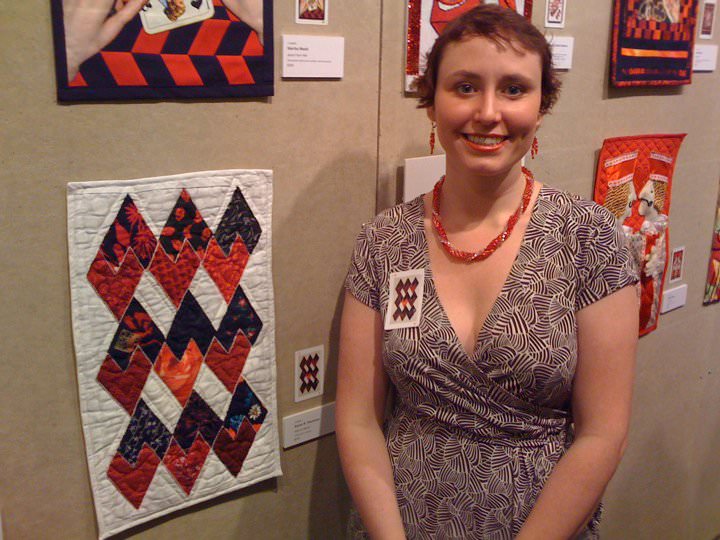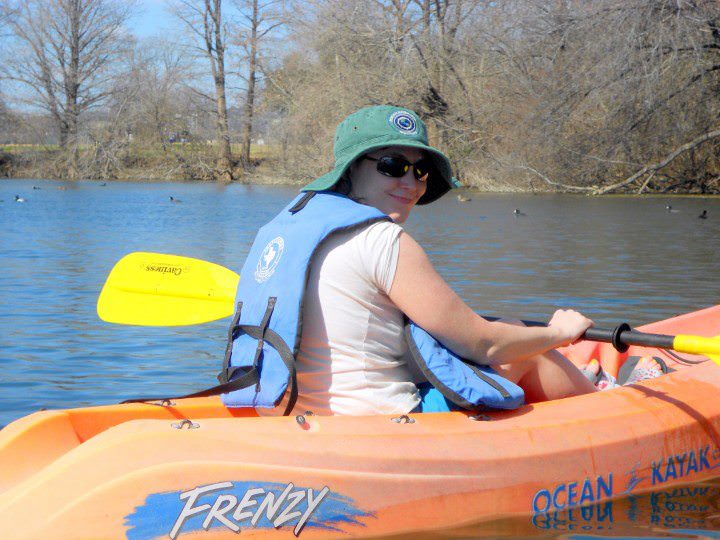Karen Thickman’s resume could go all the way back to her childhood designing experiments to answer the questions thought up by her seven-year-old self. She remembers her first experiment—working with her mother, who first taught her the scientific method, to determine why leaves of different colors had frozen at different depths of the family’s pool—and many experiments thereafter. Today, Thickman is a professor at the Lane Center for Computational Biology in the School of Computer Science at Carnegie Mellon University (CMU), focusing on teaching quantitative biological techniques and experimental design.
Studying science in college out of dueling desires to be either an astronaut (implanted with a love of space from her physicist father) or a medical doctor, Thickman was sidetracked by her biophysical chemistry studies at Dartmouth College. “As the courses got more advanced, I liked them more and more,” she explained. “I really liked protein structure and function studies, which became my focus in looking for graduate programs—and those programs turned out to be biophysics programs.”
Specifically, it turned out that the program was molecular biophysics at Johns Hopkins University Medical School, where Thickman earned her PhD and met colleague and friend Ann Marie Stanley Quayle. Though their paths have not crossed professionally since graduate school, Stanley Quayle explains that they “toiled long hours together preparing for qualifying exams and getting through our coursework at Johns Hopkins.”
As scientists, it is important that we not only use data in our research, but also educate and model using data to make real-world decisions.
-Thickman
After being exposed to single-molecule experiments at a Biophysical Society Annual Meeting, Thickman decided to pursue this “holy grail of molecular studies” in a postdoc program. “I remember having my mind blown by watching movies of DNA gyrase activity,” she said, “so I went to the University of Pittsburgh (Pitt) to study DNA helicases with single-molecule studies.” Her experience at Pitt challenged her with studies that were difficult in both design and execution. “Our experiments didn’t yield useful results, but I learned a lot about helicases and really honed my experimental design skills.”
As her postdoc was winding down, Thickman realized that she had gotten to a point where she did not have good tools for answering the questions she was interested in asking—and she wasn’t as interested in the questions she did have the tools to answer. “I started looking around for what else my skills had prepared me for, and recalled that I had really wanted to teach as a student,” Thickman said.
Her decision to pursue teaching happily coincided with an open teaching faculty position at CMU, where she works today, teaching first-year undergraduates to first-year graduate students. Thickman is currently developing and revising several courses that try to introduce students to lab-based quantitative and computational biology, including a course in the joint Pitt-CMU PhD program in computational biology, where she works with Pitt professor Joseph Ayoob. “We have been reworking the syllabus and structure of the course to include more experiential learning,” Ayoob explained. “We are finding that having the students play a more active role in designing the experiments —as opposed to giving them a recipe to follow —appears to have improved their interest level and grasp of the material and techniques.” The pair even incorporated Thickman’s love of cheese into their class—“for the genomics/molecular biology section, Karen had the great
idea to sequence the microbiomes of different cheeses,” said Ayoob. “The students were quite abuzz and engaged in finding the answers to their questions about the cheeses.”
Starting a job in a computational biology department has not always been easy. “I used to cry when I had to use Unix [as a grad student],” Thickman admitted. “Though I was hired to teach experimental biology, it was, and still is, intimidating.” She has faced many of the challenges any young professor might —from adapting to a steep learning curve of programming and algorithm design to trying to create well-balanced assignments that provide an opportunity to practice skills without becoming unreasonably time consuming, or the opposite: busywork. “I’ve run with the idea that the best way to learn something is to teach it, so I try to teach things I don’t know much about,” Thickman said. “It is a great, and terrifying, way to learn new things.”
Her work as a teacher has developed her interest in education policy, an interest she nurtures with the help of the Biophysical Society’s Public Affairs Committee. “I’ve become very interested in workforce and diversity questions,” Thickman said. “Questions like—How many PhDs in any given field are needed in the country? And are PhDs having trouble finding jobs just because funding is low, or is the market truly saturated?—are fascinating.” Long term, she would like to get more involved in education research and education policy, but in the meantime, she is happy to teach her friends and colleagues about the importance of getting involved. “Karen was the first person to teach me about the important role of scientists as advocates for science in the public domain, and for good policy,” said Stanley Quayle.
 With Thickman’s interest in public policy, it may come as no surprise that her scientific role model is Steven Chu. “I admire Dr. Chu for two distinct reasons,” said Thickman, “First, for his ability to take the knowledge and tools of one field and bring them to bear on a new field, as he did in developing the field of single-molecule studies.” And second, according to Thickman, for taking a role in public life. “As scientists, it is important that we not only use data in our research, but also educate and model using data to make real-world decisions,” Thickman explained. “Even before his role as Secretary of Energy, Dr. Chu was taking an active role in society and demonstrating how data should be used in public policy decision-making.”
With Thickman’s interest in public policy, it may come as no surprise that her scientific role model is Steven Chu. “I admire Dr. Chu for two distinct reasons,” said Thickman, “First, for his ability to take the knowledge and tools of one field and bring them to bear on a new field, as he did in developing the field of single-molecule studies.” And second, according to Thickman, for taking a role in public life. “As scientists, it is important that we not only use data in our research, but also educate and model using data to make real-world decisions,” Thickman explained. “Even before his role as Secretary of Energy, Dr. Chu was taking an active role in society and demonstrating how data should be used in public policy decision-making.”
When she’s not in the classroom, Thickman takes a small step outside of science. Though Stanley Quayle argued that she “has never been one for the mold of traditional scientist,” Thickman’s commentary on her hobbies may beg to differ. She enjoys cooking and baking (“I love the chemistry and microbiology of food!”), quilting (“I think protein crystal structures, expression heat maps, dynamic programming matrices, cell cycle images, etc. make for great baby quilts!”), and dancing Argentine tango (this one may be where she breaks the mold). Together with her husband Noah Smith, Thickman tangoed her way through graduate school and her postdoc, including an afternoon of tango lessons for their wedding guests. “Karen and Noah are fantastic dancers,” Stanley Quayle said. “The rest of us [at the tango lessons] you could readily pick out on the dance floor as scientists!”